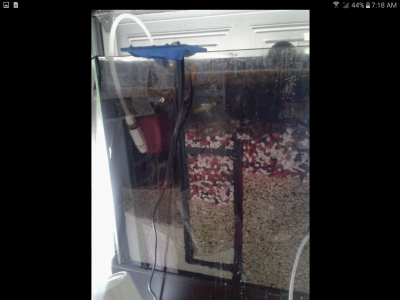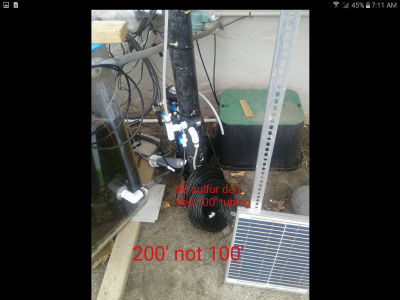In a normal aquarium without dosing and bio-filter: nitrification depletes alk but when that process takes place in a nitrifying biofilm the film will by nature also remove nitrogen due to the high oxygen consumption, about 16% of the nitrate production, which means each cycle +- 16 % of the nitrogen may be exported, without doing a thing. ( some claim a nitrifying bio-filter produces nitrogen!?)
If the nitrifying bio-film grows on a base of carbon carbonate most carbon will be retrieved from of the substrate dissolved by the acids . When growing on a base of carbon carbonate mixed with elemental sulphur more nitrogen gas N2 will be produced by the BADES process and exported, more accids will be produced, more carbon will be retrieved from the substrate dissolved by the acids. The effect on alk in the water column for both nitrification and dentrification will be minimal. Calcium and some sulphate is produced. Depending on the used substrate minerals are added, useful for calcification.
Each internal cycle of nitrogen, production, nitrification, consumption, production, nitrification a lot of the nitrogen will effectively be exported, this way restoring the nutrient balance as only nitrogen over-production considered not needed may be removed. Without doing a thing, just by nature! Naturally when no supplemental nitrogen is added. if the addition of nitrogen is adjusted to the removal rate, or vice versa, the removal rate to the addition, nitrate will not build up. One is able to manage both sides, the removal rate and the addition rate.
If all of the above is correct, the next question may be: why most reefers do not use a bio-filter?
If the nitrifying bio-film grows on a base of carbon carbonate most carbon will be retrieved from of the substrate dissolved by the acids . When growing on a base of carbon carbonate mixed with elemental sulphur more nitrogen gas N2 will be produced by the BADES process and exported, more accids will be produced, more carbon will be retrieved from the substrate dissolved by the acids. The effect on alk in the water column for both nitrification and dentrification will be minimal. Calcium and some sulphate is produced. Depending on the used substrate minerals are added, useful for calcification.
Each internal cycle of nitrogen, production, nitrification, consumption, production, nitrification a lot of the nitrogen will effectively be exported, this way restoring the nutrient balance as only nitrogen over-production considered not needed may be removed. Without doing a thing, just by nature! Naturally when no supplemental nitrogen is added. if the addition of nitrogen is adjusted to the removal rate, or vice versa, the removal rate to the addition, nitrate will not build up. One is able to manage both sides, the removal rate and the addition rate.
If all of the above is correct, the next question may be: why most reefers do not use a bio-filter?





















